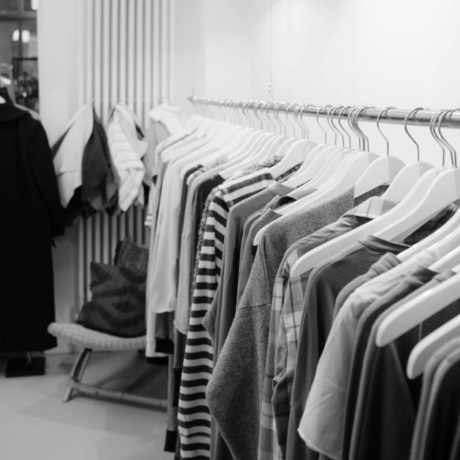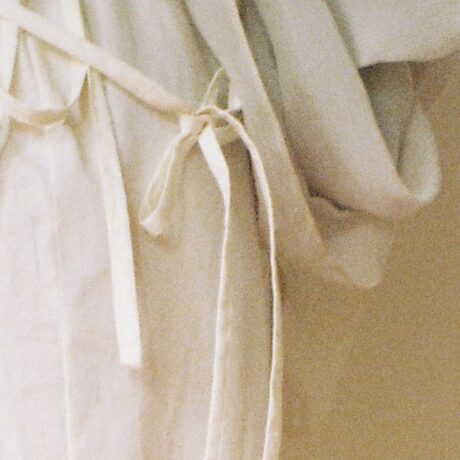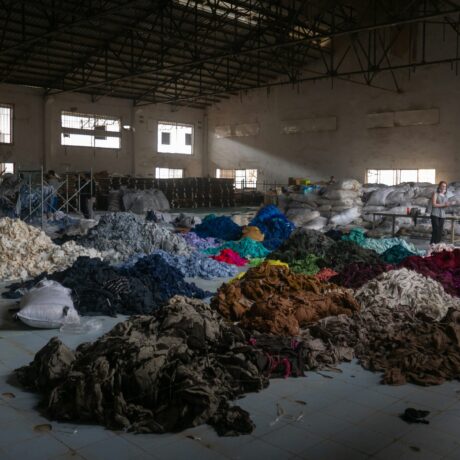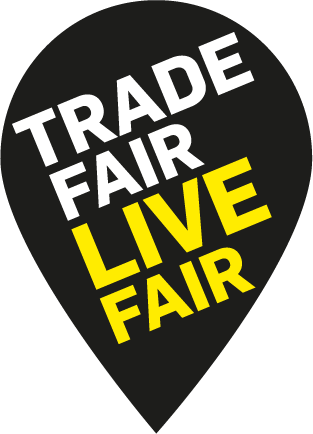De la Sabra Marroquí al Izote de Zumpahuacán: Mitos y realidades de las fibras sostenibles en el mundo moderno
Por: Daniela Rejaf – Diseñadora textil y líder de Fashion Revolution México
El concepto de moda sostenible lleva años en constante evolución, cobrando relevancia en México y Latinoamérica gracias a movimientos como Fashion Revolution, Universo MOLA y Slow Fashion Movement, entre otros. Además, una creciente cantidad de marcas, cada vez más reconocidas, se están transformando para alinearse con este concepto. Sin embargo, no todas lo hacen con buenas intenciones; algunas caen en el greenwashing, adoptando la etiqueta de sostenibles sin un compromiso real.
El camino hacia la sostenibilidad es complejo, comenzando por la forma en que se le llama a una marca con este enfoque. No es correcto afirmar que una marca es “100% sostenible”, pues en esencia es complejo que una marca pueda lograr un equilibrio perfecto en sus tres pilares ( social , económico y ambiental) en todas sus operaciones, productos y servicios. Incluso ya muchas marcas o proyectos comienzan a utilizar términos como “moda lenta”, “circular” o “responsable”. Este enfoque es un buen punto de partida para identificar a aquellas que están realmente trabajando hacia un futuro más sostenible. En nuestro artículo anterior también compartimos algunos puntos de referencia interesantes en el camino del consumidor a la sostenibilidad, puedes leerlo aquí.

Sin duda, el tema que más resalta cuando se habla o comercializa la moda sostenible son los materiales. Entre los más utilizados se encuentran el bambú, el cáñamo, el algodón orgánico, el henequén, el tencel, entre otros. Sin embargo, al indagar en la trazabilidad de estos materiales, nos damos cuenta de la importancia de la transparencia, que es uno de los elementos mayormente resaltados en la campaña que llevó a fundar nuestro movimiento, . Es por eso que, como activista y diseñadora, me siento impulsada a investigar a fondo cada fibra para conocer su origen y proceso de fabricación.
Mi curiosidad sobre las fibras textiles comenzó, como la de muchos, en las tiendas locales. Sin embargo, siempre me quedaba con ganas de saber más. Esto me llevó a experimentar con texturas, colores y especialmente con las técnicas de tejido y teñido de distintas partes del mundo, siendo los procesos mexicanos de extracción y teñido natural lo que más me cautivó.

Este interés por la materia prima textil me llevó a investigar para diseñar mi primera colección para un concurso de diseño sostenible. Fue entonces cuando encontré un artículo en línea que hablaba sobre una “seda sostenible hecha a partir de agave mexicano”, fabricada por artesanos en Marruecos. Me quedé sorprendida y, con gran entusiasmo, busqué dónde conseguirla. Incluso contacté a la periodista que escribió sobre ello, quien me indicó que había visto la fibra en una ciudad de Marruecos. Al no encontrar más información, decidí ahorrar todo lo que pude para viajar directamente y conocer el taller donde la fabricaban. Aunque la pandemia detuvo mis planes, en 2024 finalmente pude hacer el viaje.
Al llegar a Marruecos, me encontré con The Annou, una cooperativa de artesanas marroquíes dedicada al comercio justo y la transparencia en los procesos artesanales. En un taller inmersivo, pude hablar con las artesanas y aprender sobre la famosa fibra, que descubrí que se llama Sabra. Fue aquí donde comenzó mi decepción. Resulta que la fibra de Sabra, lejos de ser el material sostenible proveniente del agave mexicano como lo leí en aquel primer artículo, es en realidad un rayón importado de países asiáticos. Este mito, creado para atraer a turistas, había llegado incluso a España, donde se vendían productos “sostenibles” bajo el concepto de fibras naturales. Así como quizá muchos otros sobre fibras eco amigables en otros países o contextos hablan sobre Moda Sostenibile.
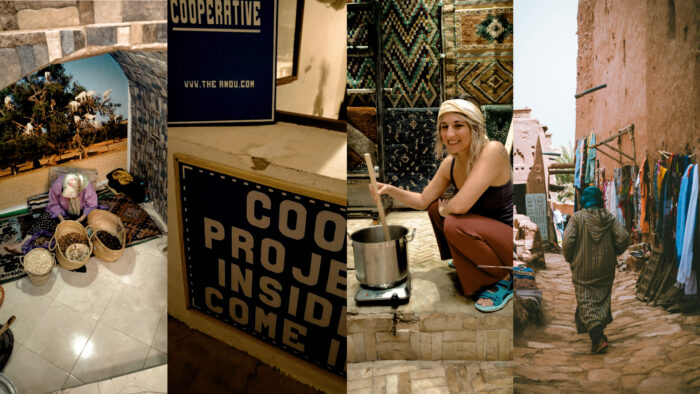
Esta experiencia no sólo me impresionó , no solo al hacerme caer en la cuenta de que estos mitos son algo muy común para atraer a los clientes hacia talleres y tiendas, sabiendo que estos jamás se van a cuestionar de dónde vienen realmente los materiales; sino también el hecho de que estas fibras, provenientes de un rincón escondido del continente africano, puede entenderse como una realidad muy lejana, pues, ¿cómo un artesano marroquí, que en su vida ha viajado a México, va a entender las propiedades del agave para poder justificar que se pueda no solo cultivar sino trabajar de la misma manera en la que se hace en los talleres de artesanos en nuestro país? . Los mitos o ideas de que un material es sostenible solo porque dice que lo es, sin una base real que lo justifique, definitivamente le dan la vuelta al mundo
Es por esto que quiero compartir otro descubrimiento, igualmente fascinante: el Izote de Zumpahuacán, una fibra natural mexicana que me sorprendió por su autenticidad y sostenibilidad. En septiembre de 2024, conocí a Ana Celia Martínez, fundadora de ANART Certificación Profesional, un proyecto dedicado a la información y la organización de viajes bio-culturales para conectar con las comunidades de artesanos en México. Junto a ella, viajé a Niltepec, Oaxaca, para conocer el proceso de creación del Añil, conocido como “el oro azul”. Lo más hermoso de ese viaje fue conocer el proyecto Azul Izote, un proyecto que ha ganado premios internacionales y que trabaja en la co-creación de productos sostenibles con artesanos, asegurando una relación justa y responsable.

Gracias a este encuentro, comenzó una colaboración con el equipo de Fashion Revolution México, en la que pude integrar mis inquietudes y descubrimientos como diseñadora activista con los conocimientos de Ana y mis compañeras de equipo. Esto nos llevó a crear un viaje-taller dirigido a marcas y estudiantes que compartan el mismo interés por comprender lo que realmente son las fibras sostenibles. Este taller tiene como objetivo ayudarles a descubrir lo cerca que tenemos estas materias primas, que son oro puro e impecablemente trazables. Además, los artesanos están muy entusiasmados por compartir sus valiosas tradiciones, lo que permitirá que la esencia de Zumpahuacan se refleje en el valor agregado que puede aportar a las marcas mexicanas.
Esto proporcionará un enfoque de sostenibilidad más realista y genuino en los materiales, ofreciendo un ejemplo para que cualquier estudiante o diseñador, ya sea en Marruecos, España o Asia, pueda encontrar una fuente confiable en Internet sobre cómo diseñar sus colecciones. De esta manera, podrán evitar las decepciones que, al igual que yo, muchos otros diseñadores han enfrentado durante sus procesos creativos. Así, cierro este artículo de forma circular, con el objetivo de reducir tanto el greenwashing como la eco ansiedad que recorren el mundo, evitando que tantas marcas inicien o lleguen a comprender la Moda Circular desde su esencia ancestral, la cual, inspirada por y para la naturaleza, no es tan difícil de lograr.
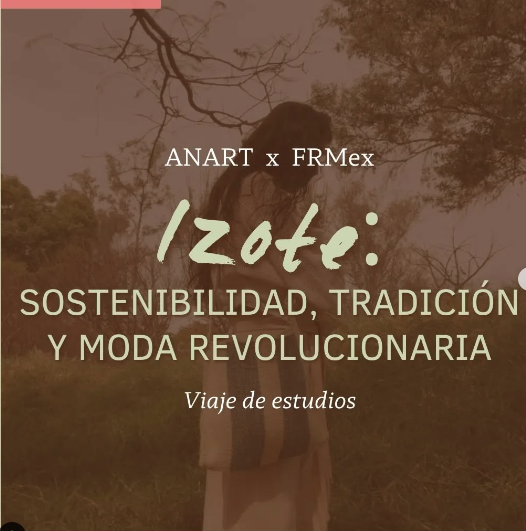
English
From Moroccan Sabra to the Zumpahuacán Izote: Myths and realities of sustainable fibers in the modern world
By: Daniela Rejaf – Textile designer and leader of Fashion Revolution Mexico
The concept of sustainable fashion has been constantly evolving for years, gaining relevance in Mexico and Latin America thanks to movements such as Fashion Revolution, Universo MOLA, and the Slow Fashion Movement, among others. Furthermore, a growing number of increasingly recognized brands are transforming to align themselves with this concept. However, not all of them do so with good intentions; some fall into greenwashing, adopting the sustainable label without a real commitment.
The path to sustainability is complex, starting with the way a brand with this approach is labeled. It is incorrect to claim that a brand is “100% sustainable,” as it is essentially complex for a brand to achieve a perfect balance across its three pillars (social, economic, and environmental) in all its operations, products, and services. Many brands or projects are even beginning to use terms such as “slow fashion,” “circular,” or “responsible.” This approach is a good starting point for identifying those that are truly working toward a more sustainable future. In our previous article we also shared some interesting benchmarks on the consumer journey to sustainability, you can read it here.
Without a doubt, the most prominent topic when discussing or marketing sustainable fashion is materials. Among the most commonly used are bamboo, hemp, organic cotton, henequen, and Tencel, among others. However, when investigating the traceability of these materials, we realize the importance of transparency, which is one of the elements most highlighted in the campaign that led to the founding of our movement. That’s why, as an activist and designer, I feel driven to thoroughly research each fiber to understand its origin and manufacturing process.
My curiosity about textile fibers began, like that of many, in local stores. However, I always wanted to know more. This led me to experiment with textures, colors, and especially with weaving and dyeing techniques from different parts of the world, with Mexican natural extraction and dyeing processes being what captivated me the most.
This interest in the raw textile material led me to research my first collection for a sustainable design competition. It was then that I found an online article about a “sustainable silk made from Mexican agave,” manufactured by artisans in Morocco. I was amazed and excitedly searched for where to get it. I even contacted the journalist who wrote about it, who told me she had seen the fiber in a city in Morocco. Finding no further information, I decided to save as much as I could to travel directly and visit the workshop where it was manufactured. Although the pandemic halted my plans, I was finally able to make the trip in 2024.
Upon arriving in Morocco, I came across The Annou, a cooperative of Moroccan artisans dedicated to fair trade and transparency in artisanal processes. In an immersive workshop, I was able to speak with the artisans and learn about the famous fiber, which I discovered is called Sabra. It was here that my disappointment began. It turns out that Sabra fiber, far from being the sustainable material derived from Mexican agave as I read in that first article, is actually a rayon imported from Asian countries. This myth, created to attract tourists, had even reached Spain, where “sustainable” products were sold under the concept of natural fibers. Perhaps just as many others about eco-friendly fibers in other countries or contexts talk about Moda Sostenibile.
This experience not only impressed me, not only by making me realize that these myths are very common to attract customers to workshops and stores, knowing that they will never question where the materials really come from; but also the fact that these fibers, originating from a hidden corner of the African continent, can be understood as a very distant reality. How can a Moroccan artisan, who has never traveled to Mexico in his life, understand the properties of agave to justify that it can be not only cultivated but also worked in the same way as it is done in artisan workshops in our country? Myths or ideas that a material is sustainable just because it is said to be, without a real basis to justify it, are definitely going around the world.
This is why I want to share another equally fascinating discovery: Izote de Zumpahuacán, a Mexican natural fiber that surprised me with its authenticity and sustainability. In September 2024, I met Ana Celia Martínez, founder of ANART Professional Certification, a project dedicated to providing information and organizing biocultural trips to connect with artisan communities in Mexico. With her, I traveled to Niltepec, Oaxaca, to learn about the creation process of indigo, known as “blue gold.” The most beautiful part of that trip was learning about the Azul Izote project, an international award-winning project that works to co-create sustainable products with artisans, ensuring a fair and responsible relationship.
Thanks to this encounter, a collaboration began with the Fashion Revolution Mexico team, in which I was able to integrate my concerns and discoveries as an activist designer with the knowledge of Ana and my teammates. This led us to create a workshop-trip aimed at brands and students who share the same interest in understanding what sustainable fibers truly are. This workshop aims to help them discover how close we are to these raw materials, which are pure gold and impeccably traceable. Furthermore, the artisans are very enthusiastic about sharing their valuable traditions, which will allow the essence of Zumpahuacan to be reflected in the added value it can bring to Mexican brands.
This will provide a more realistic and genuine approach to sustainability in materials, offering an example so that any student or designer, whether in Morocco, Spain, or Asia, can find a reliable source online on how to design their collections. In this way, they will be able to avoid the disappointments that, like me, many other designers have faced during their creative processes. Thus, I close this article in a circular way, with the aim of reducing both the greenwashing and eco-anxiety that sweep the world, preventing so many brands from starting or coming to understand Circular Fashion from its ancestral essence, which, inspired by and for nature, is not so difficult to achieve.




